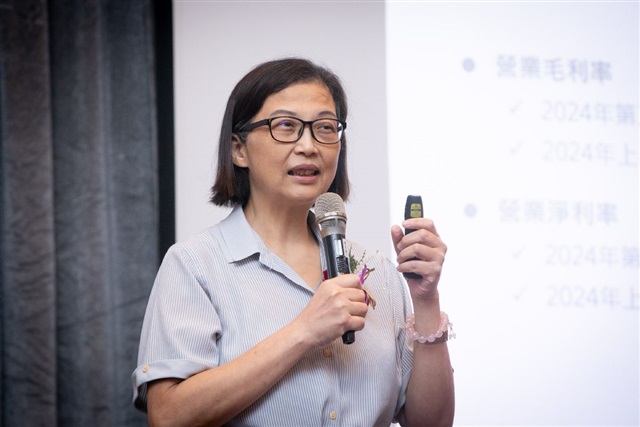GlobalWafers chairperson Doris Hsu stated during its earnings call that recent currency fluctuations have somewhat suppressed revenue performance when calculated in New Taiwan Dollars (NTD). However, when calculated in USD, GlobalWafers' consolidated revenue for the second quarter of 2025 reached US$520 million, a 9.7% increase from the first quarter. Total revenue for the first half of 2025 was US$990 million, representing a 4.2% increase compared to the same period in 2024.
When measured in USD, the company's revenue growth trend is more pronounced, with revenue potentially surpassing 2024 levels. On the other hand, the final consolidated revenue in NTD terms will still be affected by exchange rate volatility.
Hsu stated that regarding long-term contracts, some raw material suppliers have recently proposed price increases due to currency fluctuations and rising energy costs. However, material prices remain relatively stable and have not seen significant increases.
Spot market silicon wafer prices outside long-term contracts have declined notably over the past three to four quarters. Starting in the second quarter of 2025, GlobalWafers began negotiating price increases with some clients, although no agreement has been finalized. Price adjustments may happen as early as the fourth quarter or the first quarter of 2026.
It overall remains difficult to fully pass rising costs onto customers. However, the company is actively communicating with clients about high-cost items. Long-term contracts accounted for more than 50% of revenue in the first half of 2025.
6-inch wafers were around 70% of capacity in the second quarter, while 8-inch wafers were slightly below 80%, and 12-inch wafers exceeded 90%.
In the compound semiconductor segment, gallium nitride (GaN) lines are operating at full capacity. Demand remains strong for GlobalWafers' self-developed GaN-on-Si products, and production capacity will be expanded by another 30%. Meanwhile, silicon carbide (SiC) faces more difficulty, as most customers are still dealing with high inventory levels and weak demand, leading to intense price competition. Over the past two years, prices have fallen by 40-50%.
Due to customers offering lower quotes, GlobalWafers has scaled back SiC production but continues to work on cost optimization and aims to resume growth starting in 2026.
Global economic momentum has slowed due to trade policies and other factors. End-market demand remains weak, and recent developments such as the US Section 232 investigations and potential chip tariffs have added uncertainty to the market.
Nonetheless, long-term structural growth in the semiconductor industry remains intact, driven by AI and HPC applications. Advanced process node demand continues to be strong, and more clients are signaling that inventory corrections in mature processes are nearing an end. Currently, the main variables are tariffs and trade policies and their effects on end-consumer confidence and the pace of demand recovery.
Facing this new global landscape, Hsu emphasized that while the outcome of tariffs remains uncertain, any disparity in treatment compared to competitors would create pressure. If tariffs are imposed on wafers, GlobalWafers' localized production in the US can help strengthen the domestic supply chain and align with US policy direction.
GlobalWafers is actively executing its global expansion plans. Its new Texas and Missouri fabs, added with Italy expansion are all progressing. Its volume production is expected between the second half of 2025 and the first half of 2026.
If US demand remains strong, the company will consider initiating the next phase of expansion early, aiming to establish a fully vertically integrated supply chain to ensure long-term supply stability. The timeline for the Texas fab to reach break-even depends on multiple factors.
These include market demand and ASP, local manufacturing costs and competitiveness, ongoing tariff and FX dynamics, and the localization of key materials and equipment, all of which impact cost structure and supply chain resilience. The schedule and milestones for government subsidies will also affect financial planning. As yields improve and the local supply chain strengthens, the cost structure will gradually improve.
Expansions in Japan and Taiwan have been completed, both achieving record-high shipments. The Denmark fab in Europe reported its second-highest half-year revenue in the first half of 2025.
In the second quarter of the year, GlobalWafers' consolidated revenue reached NT$16.01 billion, a quarterly increase of 2.7% and an annual increase of 4.5%. Gross margin was 25.8%. Net profit reached NT$1.68 billion, up 15.5% quarterly, with a net margin of 10.5%. First-half 2025 consolidated revenue was NT$31.6 billion, up 3.9% annually, with a gross margin of 26.1% and net profit of NT$3.14 billion, for a net margin of 9.9%. Second quarter and first half revenues were both the third highest for the same period in company history.
Article edited by Jingyue Hsiao




